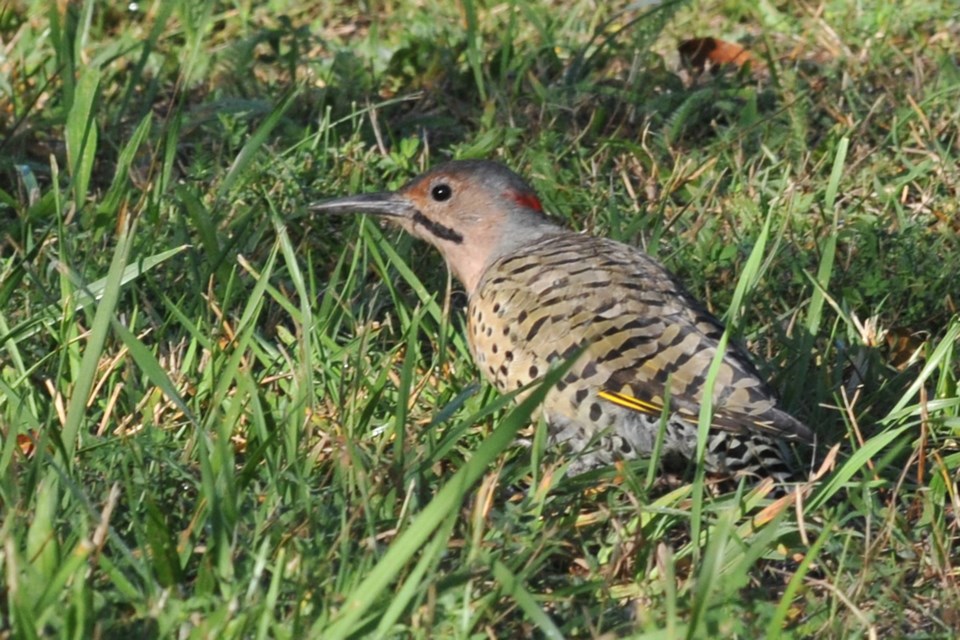Here's a new one for you... "When is a woodpecker not a woodpecker? When it's a flicker!" No? Well maybe you need to brush up on your bird watching humour. Or I need to avoid trying to be humourous.
Notwithstanding the above statement, let me illuminate you with some woodpecker lore.
There are indeed several species in the neighbourhood, including hairy, downy, pileated, red-headed, and red-bellied woodpeckers as well as the yellow-bellied sapsucker; on their winter migration you might be lucky enough to observe a black-backed or three-toed woodpecker.
And the flicker, which has been subject to a name change, going from yellow-shafted flicker to the now accepted northern flicker; the vintage of your bird guide will be determined by which name it is so labeled.
As flickers have a narrow, curved beak they cannot chisel wood as well as their cousins who can peck away dead bark or rotting wood. This slightly curved bill, while a problem for excavating through wood, is absolutely perfect for picking up their food, which is mainly ants.
While that showy cousin, the pileated woodpecker, may rip through a dying tree to get at carpenter ants, the flickers bounce around your lawn picking up ants (and other such critters) with that gently curved beak.
Flickers do live like other woodpeckers which is in the cavity of a tree. These holes, or cavities, may be naturally occurring, excavated by the birds or a combination of both.
The wood has to be firm on the outside for weather protection yet soft on the inside to be formed for an interior nest chamber. So rather than chip and chisel their way to that perfect nest, they reach inside and flick out loose material, hence the name "flicker".
The nest has to be fairly large as about ten eggs will be laid. That takes up a lot of room, especially when the kids grow up to that pre-flight stage of life.
Once air-borne, the young do not go back inside the nest cavity. However the same pair of flickers will return to the same nest hole year after year.
As an aside, a few years ago we were hosting some relatives from Holland and I pointed out a flicker on the lawn. After a few giggles and snickers it was explained to me that in Holland a flicker is a guy who wears a raincoat and nothing else and flashes his coat open to unsuspecting passersby. (Oh sure, laugh at that one.)
If your bird guide is old enough, there will be two flicker species shown, the yellow-shafted and the red-shafted. These colours refer to the central shaft of the flight feathers, easily seen when the bird takes flight and flashes its wings open to unsuspecting passersby.
If your book, or cell phone app, is more recent then you will see that these two 'species' are now considered to be the same, just with a colour morph, the red being more commonly seen along the west coast of North America.
A couple of nice traits about flickers is that they can provide easy learning opportunities for beginning birdwatchers. One, they are found commonly in our area, and two they are usually seen out in the open and not skulking around under heavy cover of tree leaves. Look for them foraging for ants in your yard or the lawn of the local park.
The males have a black marking on the side of their head, commonly referred to as a 'moustache'.
When the birds fly up and away a large white patch is easily noticed on their rump, and if going past you in flight that bright yellow collection of wing feathers is a good identifying field mark.
So hey, you've been a great audience, so just let me say in closing..."How much wood can a woodpecker peck if a woodpecker is a... flicker?"
